state of the chart:
d3 charting libraries in january 2015,
a short, personal and incomplete survey
Anna Powell-Smith http://anna.ps @darkgreener
so many charting libraries
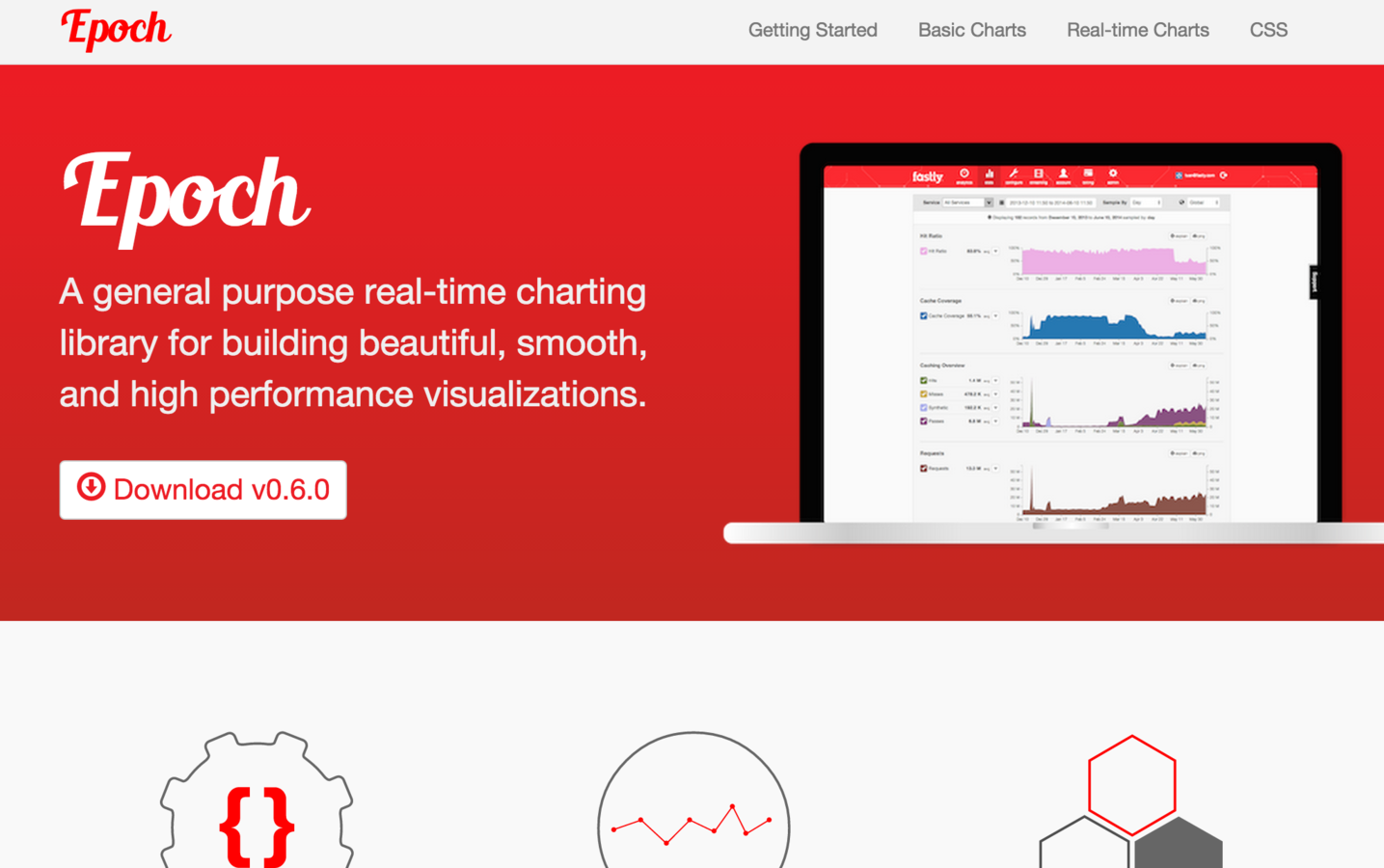
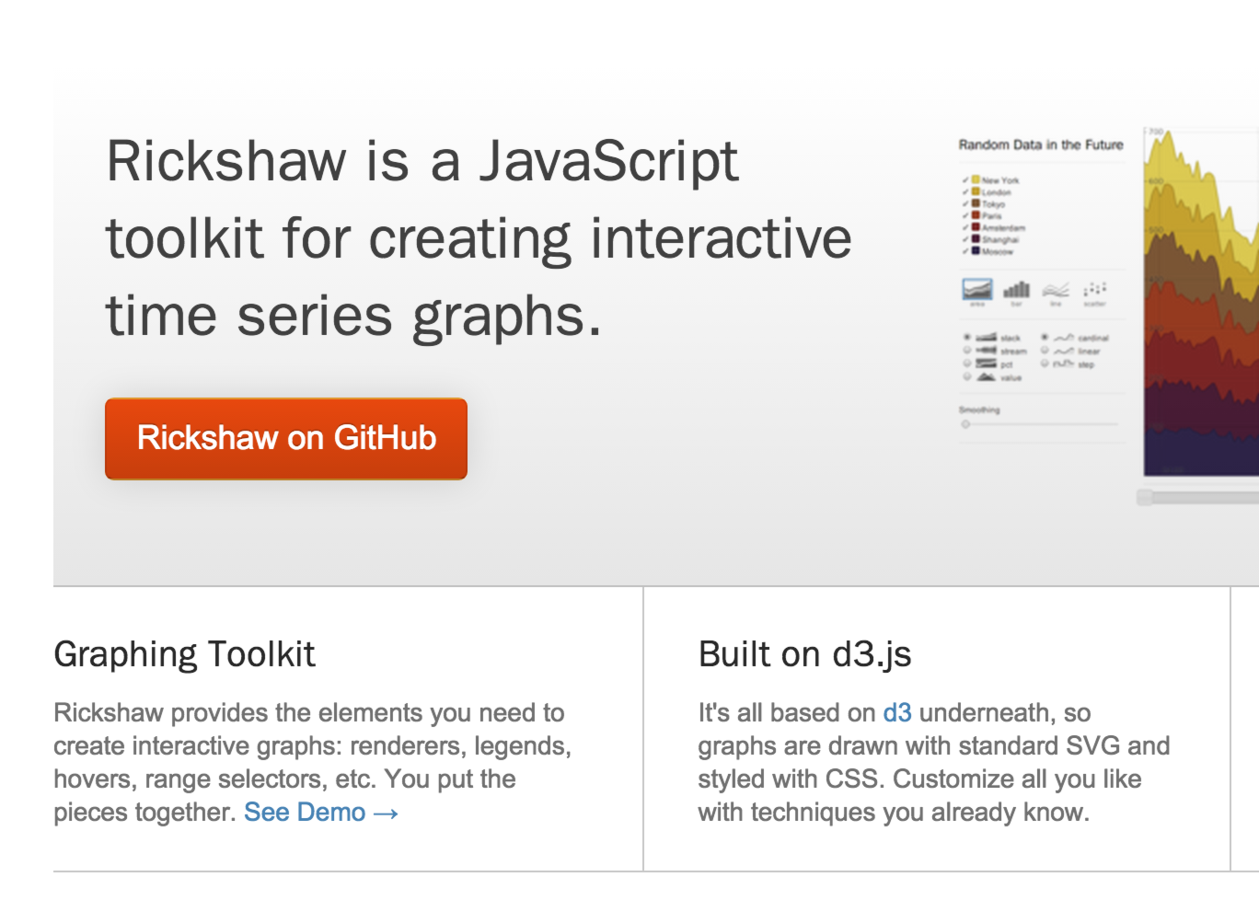
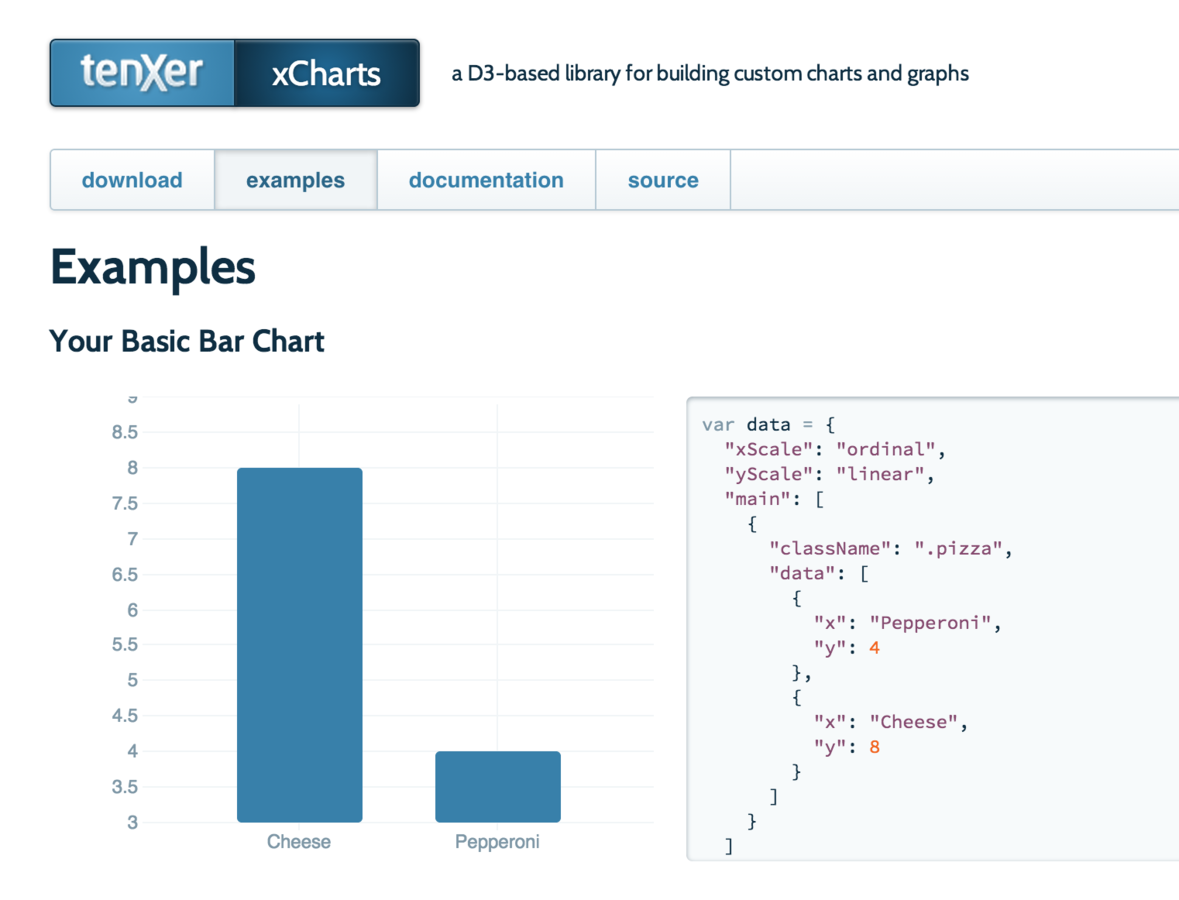

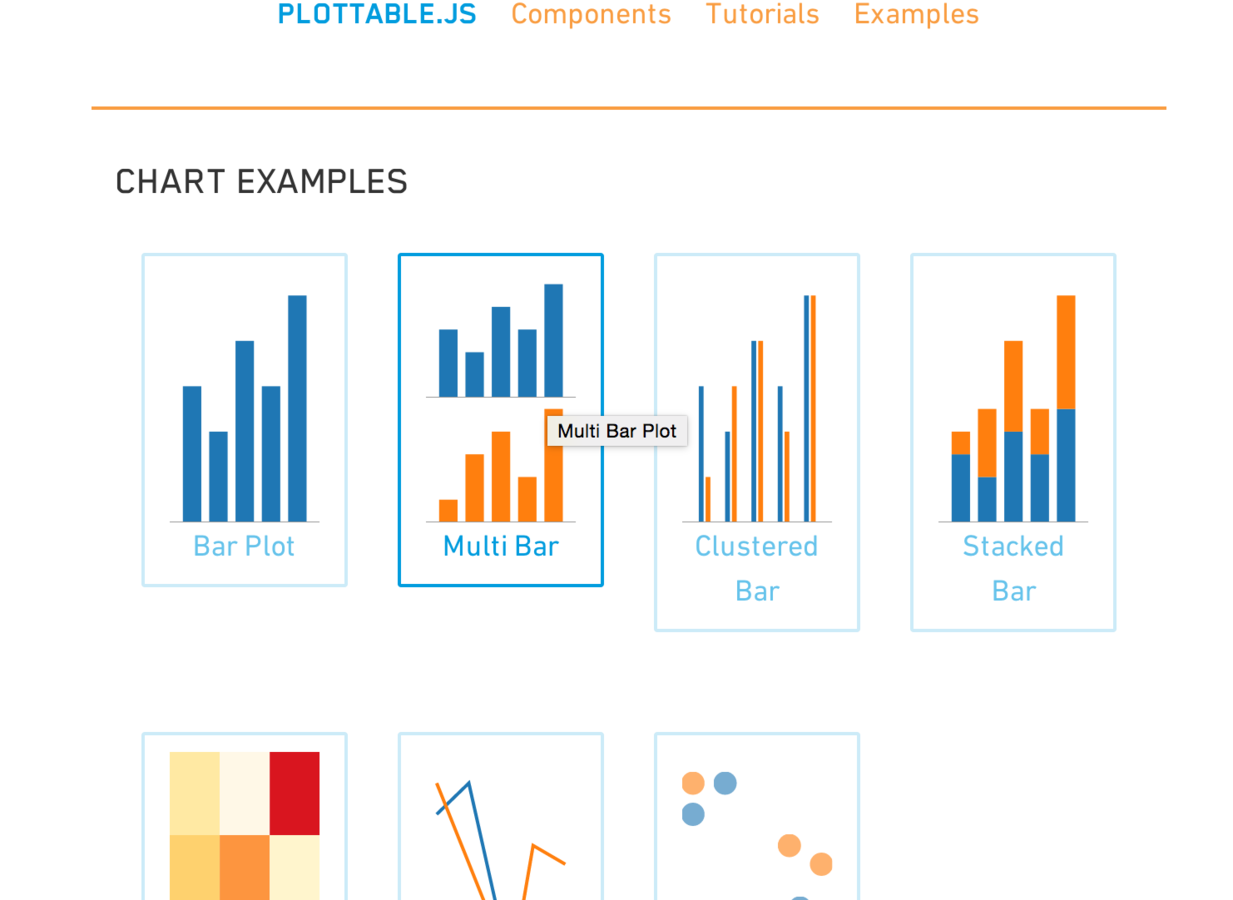

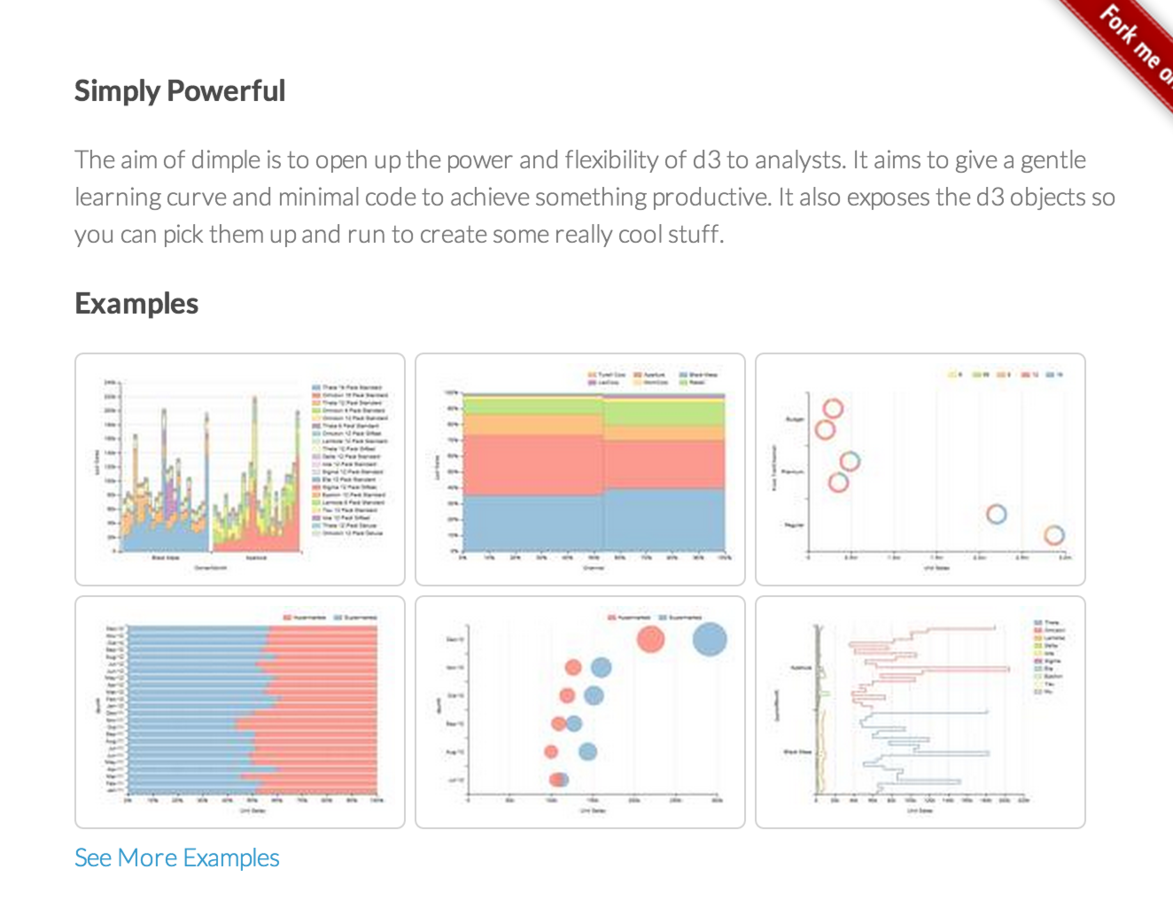
soooooooooooooo many
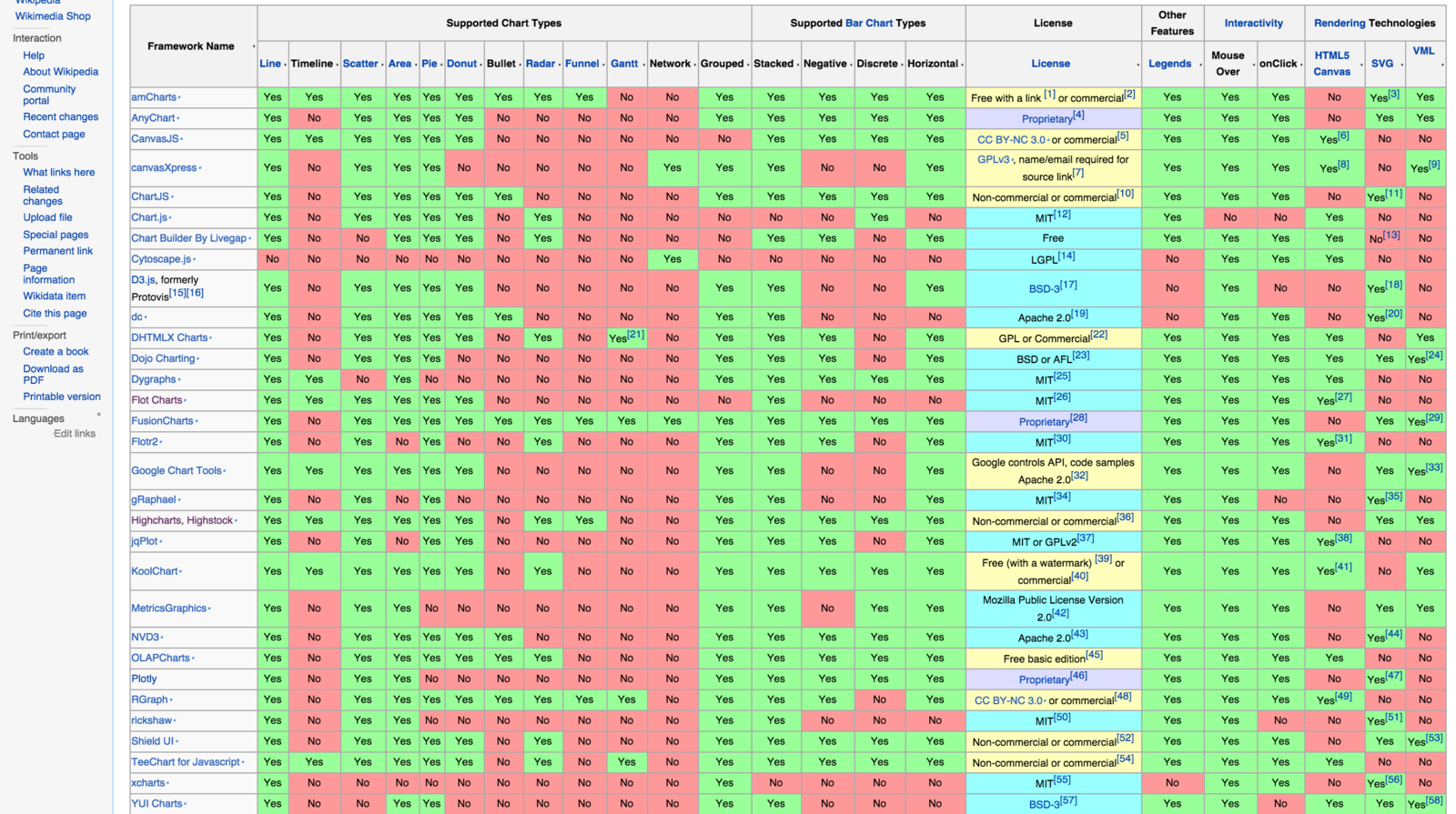

which?
why?
what next?
1. which

d3 libraries i looked at
- nvd3
- c3
- dc
- plottable (palantir)
d3 libraries i didn't look at
- xcharts (not actively developed)
- rickshaw (not actively developed)
- polycharts ($$$)
- dimple (only one active dev)
- raw (really an exploratory/design tool)
- epoch (focussed on realtime data)
post-talk note: lots of love for dimple at the meetup, especially for analysis - should check this out
d3 libraries i didn't look at
- metricsgraphics by mozilla (looks interesting, but i ran out of time)
- vega (interesting, but perhaps more theoretically right now)
and i also didn't look at
- anything deliberately specialist:
- network graphs (jsnetworkx)
- responsive charts (chartist)
- parallel coordinates (parallel coordinates)
- large datasets (crossfilter)
and i also didn't look at
- d3 libraries for your favourite javascript mvc:
- d3-angular
- d3-react
- d3-meteor
- d3-too-hip-for-you
oh yeah, not that either
- anything not based on d3
- the five d3 chart libraries released since yesterday
- your favourite d3 chart library (sorry about that)
it's a bit overwhelming...

would like to meet...
- sensible philosophy
- open licence
- being actively developed...
- ...ideally by more than one person
- straightforward setup
- supports transitions
- access to underlying d3
- support for writing plugins
we'll look at bar charts in each one
nvd3
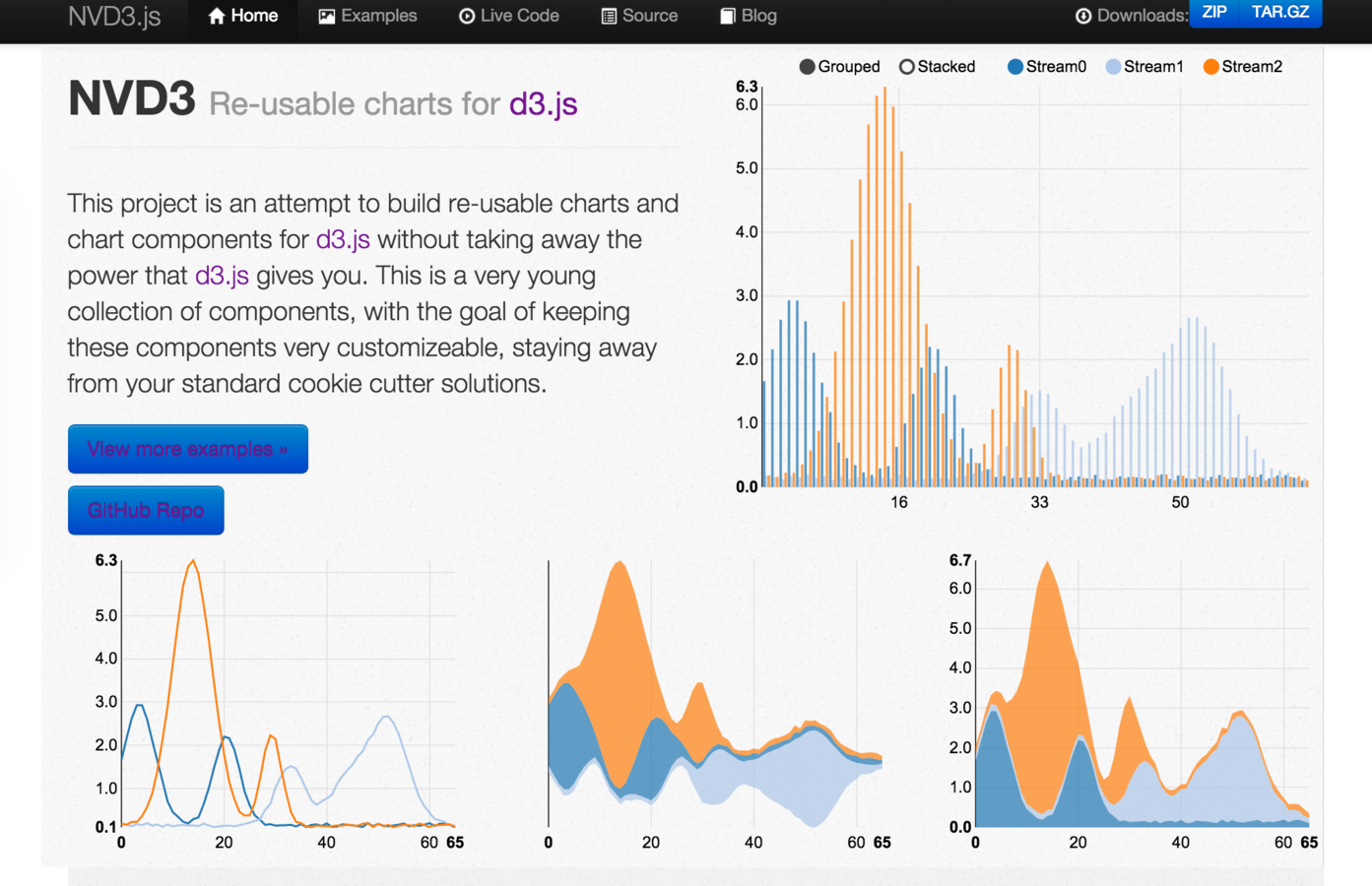
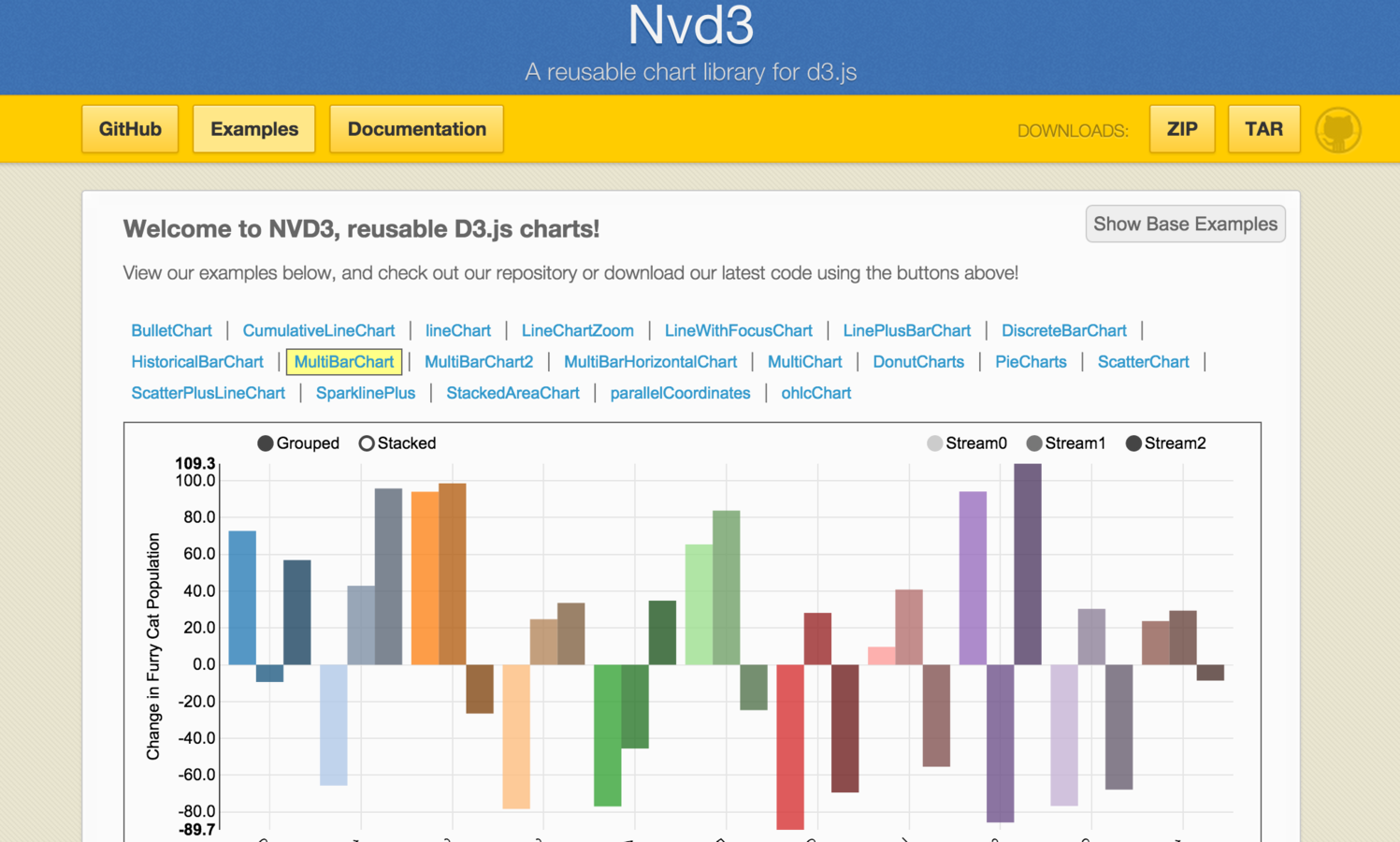
history is... interesting
- initially developed by a dev at Novus
- he made it open source, but Novus objected
- then they changed their mind
- then they stopped actively developing it when he moved on
- then someone else forked it, then decided they didn't have time to maintain it
- then someone made a community fork
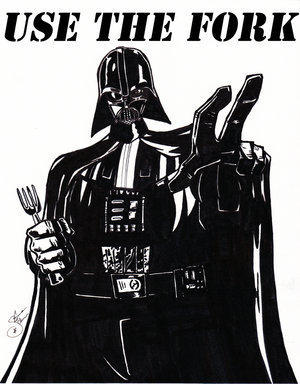
"A reusable chart library for D3"
- Apache licence
- Based on Mike Bostock's "Towards Reusable Charts"
- Begun in May 2013, currently 1.7
- "Reece" now seems to be leading
- Semi-actively developed
- Documentation split across two sites
nv.addGraph(function() {
var chart = nv.models.discreteBarChart()
.x(function(d) { return d.label }) //Specify the data accessors.
.y(function(d) { return d.value })
.staggerLabels(true) // Staggering labels.
.tooltips(false) //Don't show tooltips
.showValues(true) //...instead, show bar value on top of each bar.
.transitionDuration(350)
;
d3.select('#chart svg')
.datum(exampleData())
.call(chart);
nv.utils.windowResize(chart.update);
return chart;
});pros
- Loads of options
- Mature
- Great that there's now a community project with a clear licence situation
cons
- Documentation not great
- Definitely an 'NVD3 way' - I find it hard to follow
- Is it alive?
c3
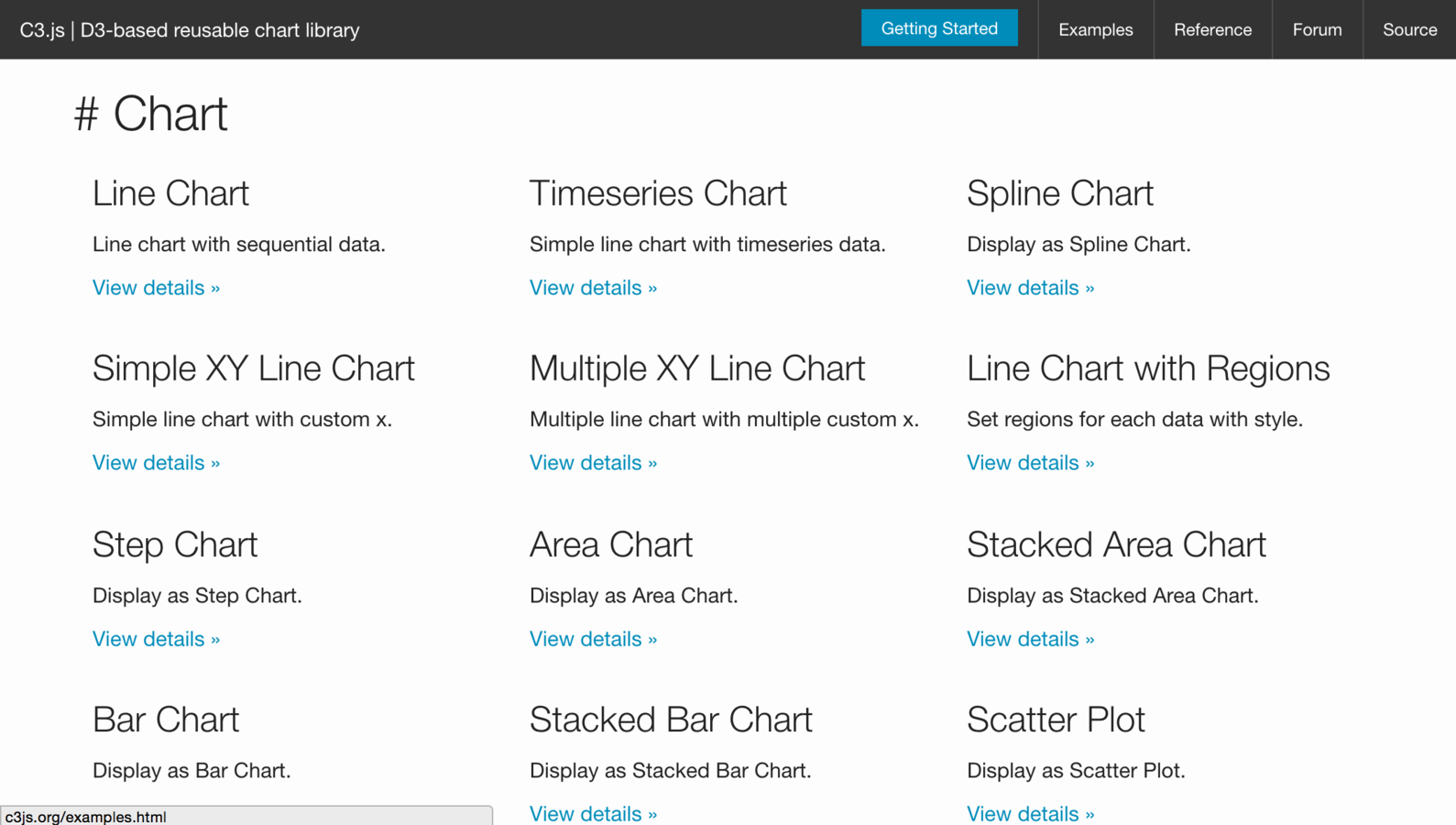
"D3-based reusable chart library"
- MIT licence
- Begun in May 2013, currently v0.4
- Masayuki Tanaka is lead dev
- Actively developed
- Active Google Group
- 3,500 GitHub stars
pros
- comfortable - feels familiar
- customisable - wraps the D3 code, extend via D3
- controllable - APIs to interact with chart state

var chart = c3.generate({
data: {
columns: [
['data1', 30, 200, 100, 400, 150, 250],
['data2', 130, 100, 140, 200, 150, 50]
],
type: 'bar'
},
bar: {
width: 100
}
});
chart.load({
columns: [
['data3', 130, -150, 200, 300, -200, 100]
]
});
var chart = c3.generate({
data: {
columns: [
['data1', 30, 200, 100, 400, 150, 250],
['data2', 130, 100, 140, 200, 150, 50]
],
type: 'bar',
labels: {
format: {
y: d3.format("$,")
}
}
},
bar: {
width: 100
}
});cons
- documentation? (seems excellent to me)
- not many plugins yet (but supported)
- no specific responsive features
- fewer chart types than nvd3
- mostly one very active developer
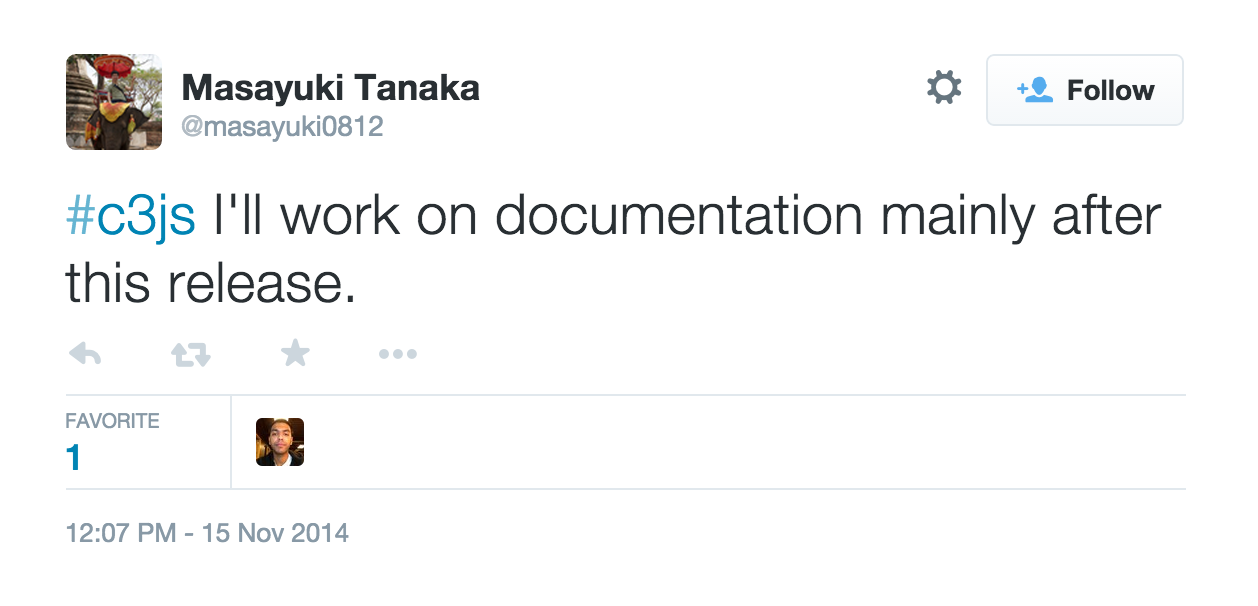
dc
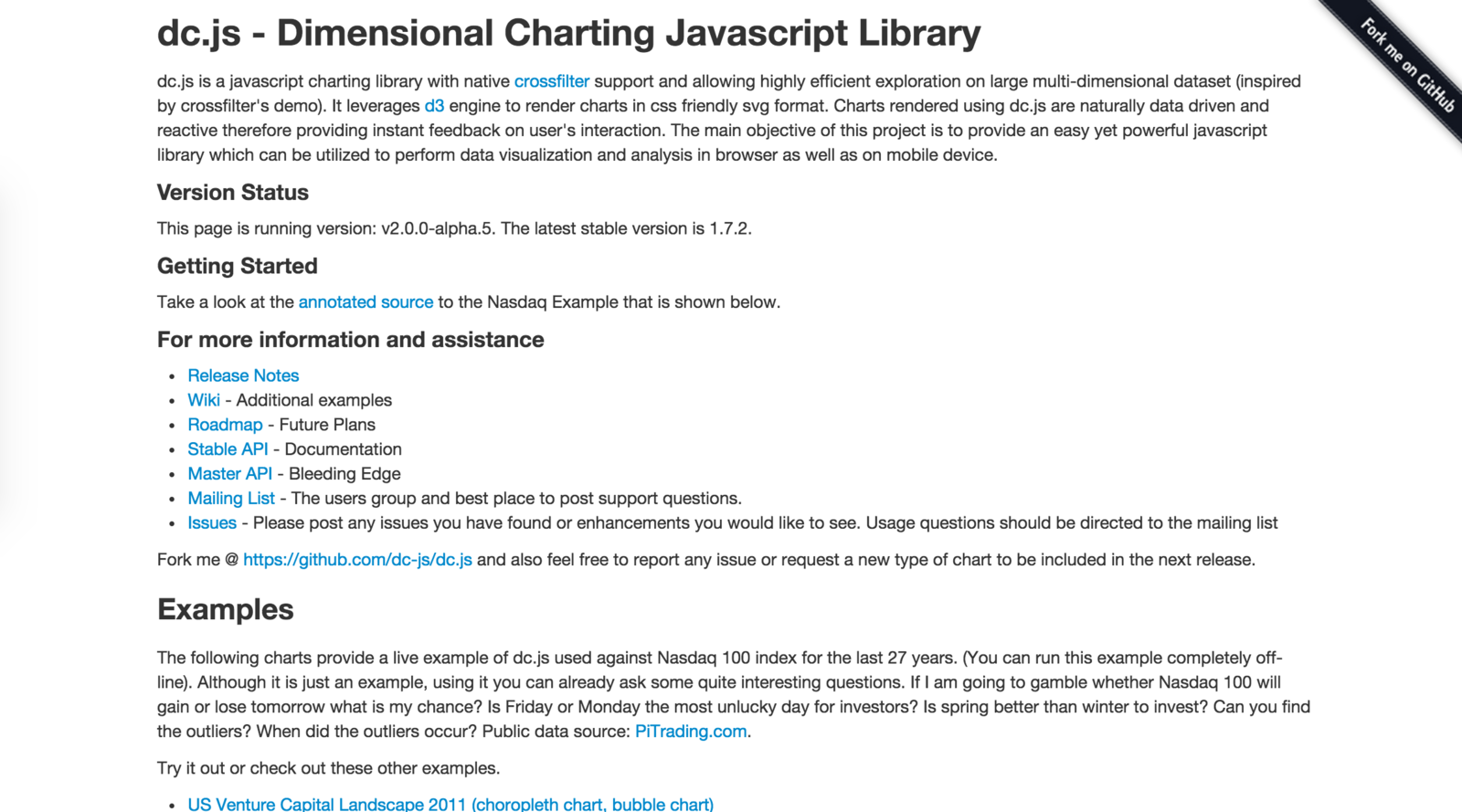
"Dimensional Charting Javascript Library"
- Apache licence
- Native Crossfilter support
- Started in 2012
- Actively developed (by 2 people!)
- 3,500 GitHub stars
var chart = dc.barChart("#test");
d3.csv("morley.csv", function(error, experiments) {
experiments.forEach(function(x) {
x.Speed = +x.Speed;
});
var ndx = crossfilter(experiments),
runDimension = ndx.dimension(function(d) {return +d.Run;}),
speedSumGroup = runDimension.group().reduceSum(function(d) {return d.Speed * d.Run / 1000;});
chart
.width(768)
.height(480)
.x(d3.scale.linear().domain([6,20]))
.brushOn(false)
.yAxisLabel("This is the Y Axis!")
.dimension(runDimension)
.group(speedSumGroup)
.renderlet(function(chart) {
chart.selectAll('rect').on("click", function(d) {
console.log("click!", d);
});
});
chart.render();
});pros
- mature
- looks stable
- actively developed
- you can do impressive things with crossfilter + dc if you invest the time in learning to use it
cons
- needs upfront investment in learning to use it - imperative approach like nvd3
- documentation isn't brilliant
- probably good if you want to use crossfilter a lot and are willing to invest the time
plottable
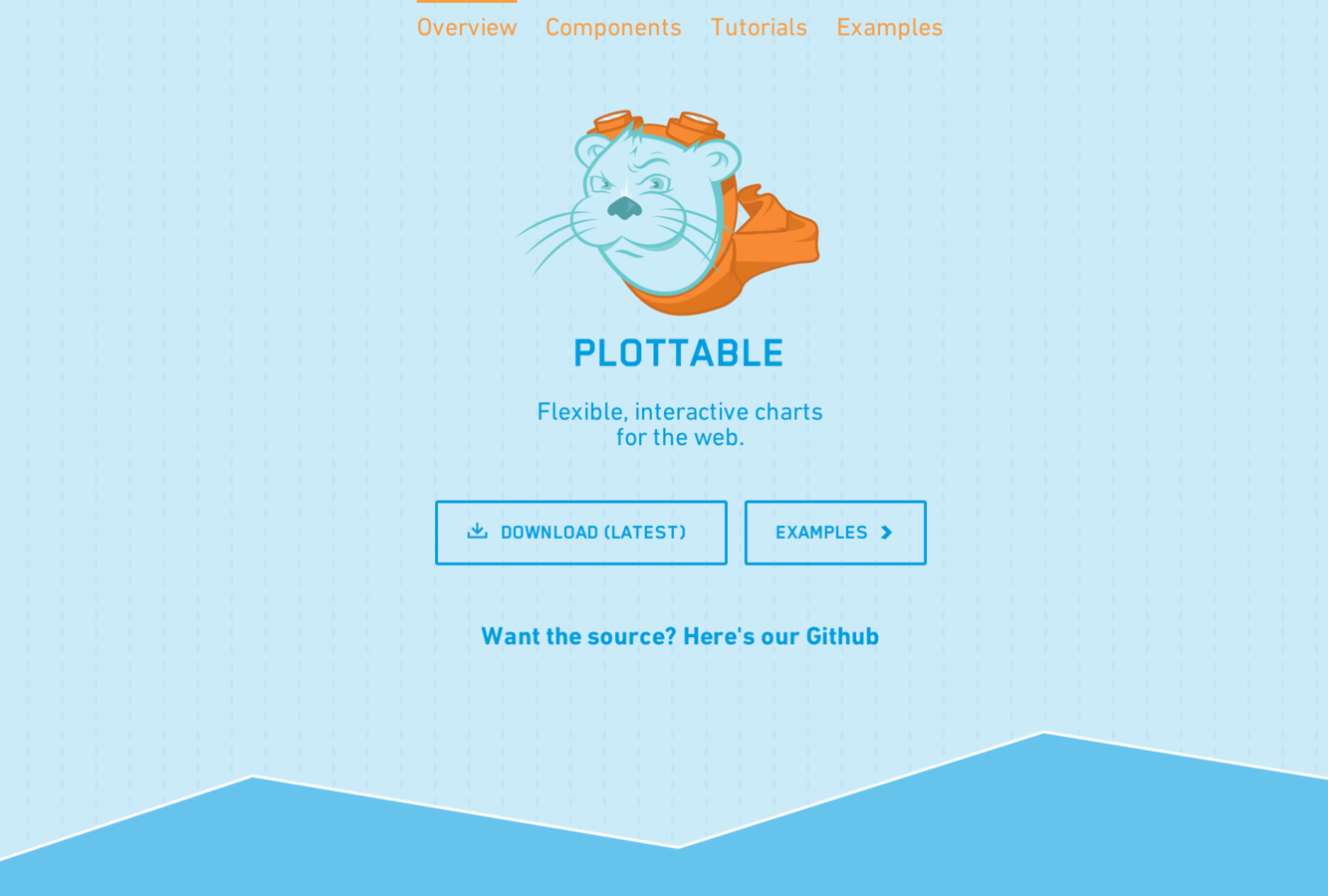
"Flexible, interactive charts for the web"
- developed by Palantir
- launched at JSConf EU 2014
- MIT licence
- actively developed (not surprising since it's so new)
- "didn't want to use raw D3, and no other library supported interactive drag and zoom"
// Scales
var xScale = new Plottable.Scale.Ordinal();
var yScale = new Plottable.Scale.Linear();
// Plot Components
var title = new Plottable.Component.TitleLabel("Celebrities");
var yLabel = new Plottable.Component.Label("Height (cm)", "left");
var xAxis = new Plottable.Axis.Category(xScale, "bottom");
var yAxis = new Plottable.Axis.Numeric(yScale, "left");
var lines = new Plottable.Component.Gridlines(null, yScale);
var plot = new Plottable.Plot.VerticalBar(xScale, yScale)
.addDataset(data)
.project("x", "name", xScale)
.project("y", "height", yScale)
.animate(true);
// Layout and render
new Plottable.Component.Table([
[null, null, title],
[yLabel, yAxis, lines.merge(plot)],
[null, null, xAxis]
])
.renderTo("svg#example");pros and cons
- nice table layout idea
- actively developed, but on company time
- why'd they build a new library rather than
extend an existing one?
phew
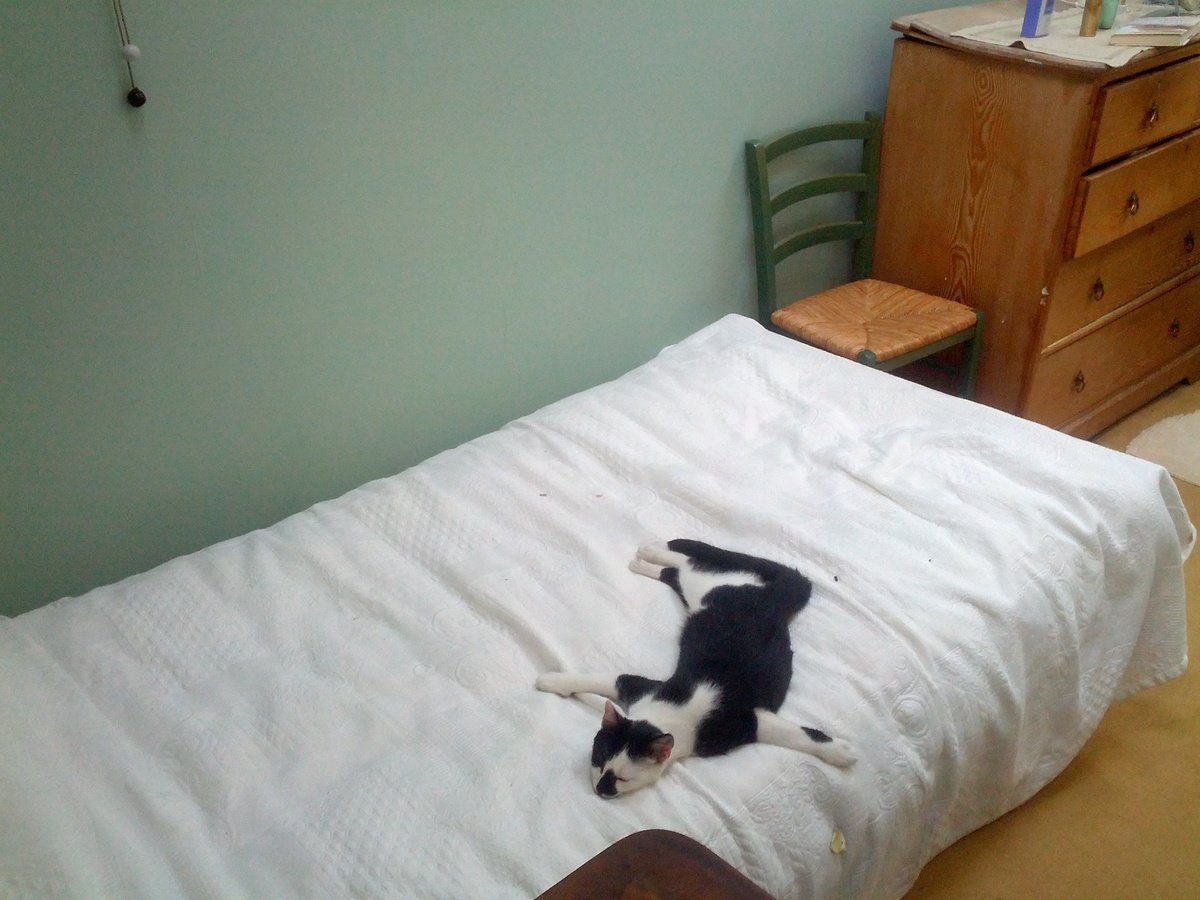
Y so many?
1. d3 is hard
d3 is low-level
2. d3 is finished
d3 is stable
3. devs ❤ reinventing the wheel
people are different
4. perhaps because earlier libraries have had a learning curve
what now?
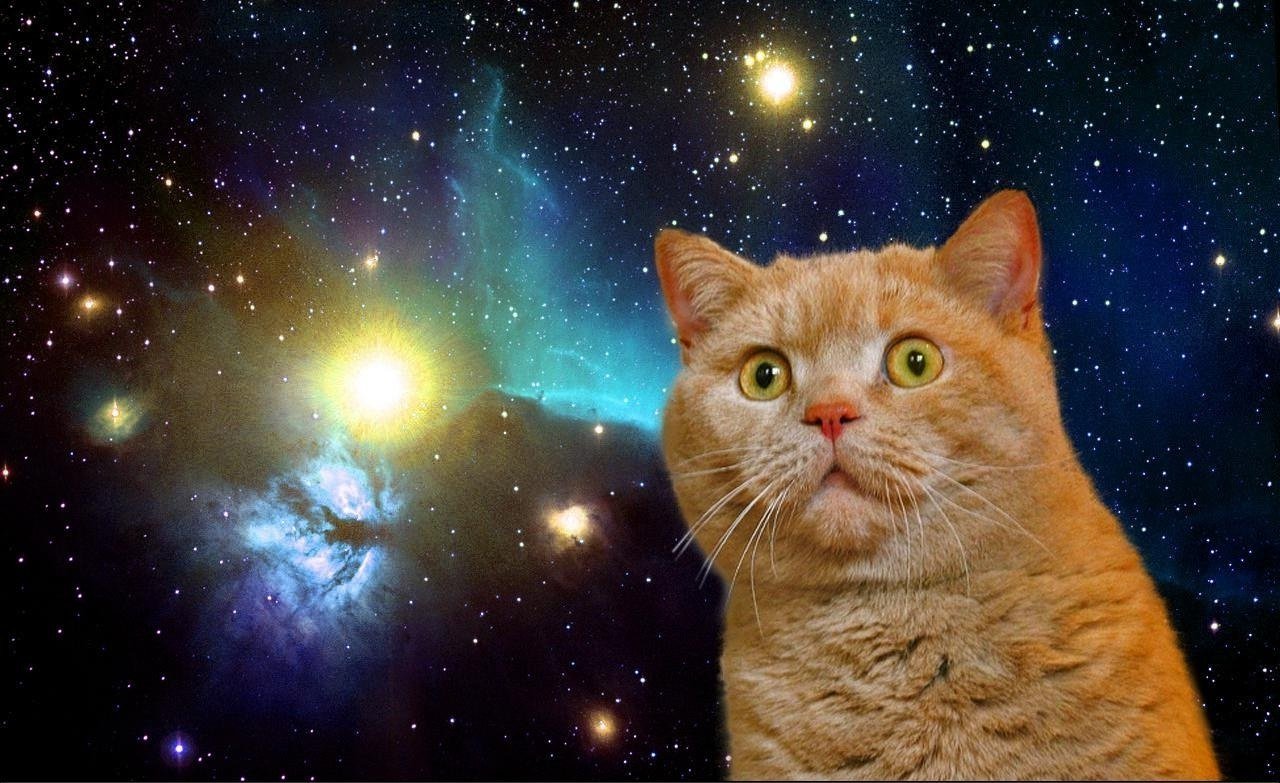
the inconclusive conclusion
1. there have always been lots of chart libraries. that probably isn't going to change

i like c3. but you might not
2. in your toolkit: tools for exploration, for workhorse
charts, + for one-off designs
tools for exploration
post talk note: people think raw is a great tool for exploration (but lament the lack of bar + line chart support)
"Learn as much as you can about existing tools which help you create standard charts quickly. Especially at the beginning of a project, it is super-important to generate a lot of charts quickly... Personally, I use Tableau and Gephi"
@moritz_stefaner
tools for
workhorse charts
alpha.ons.gov.uk
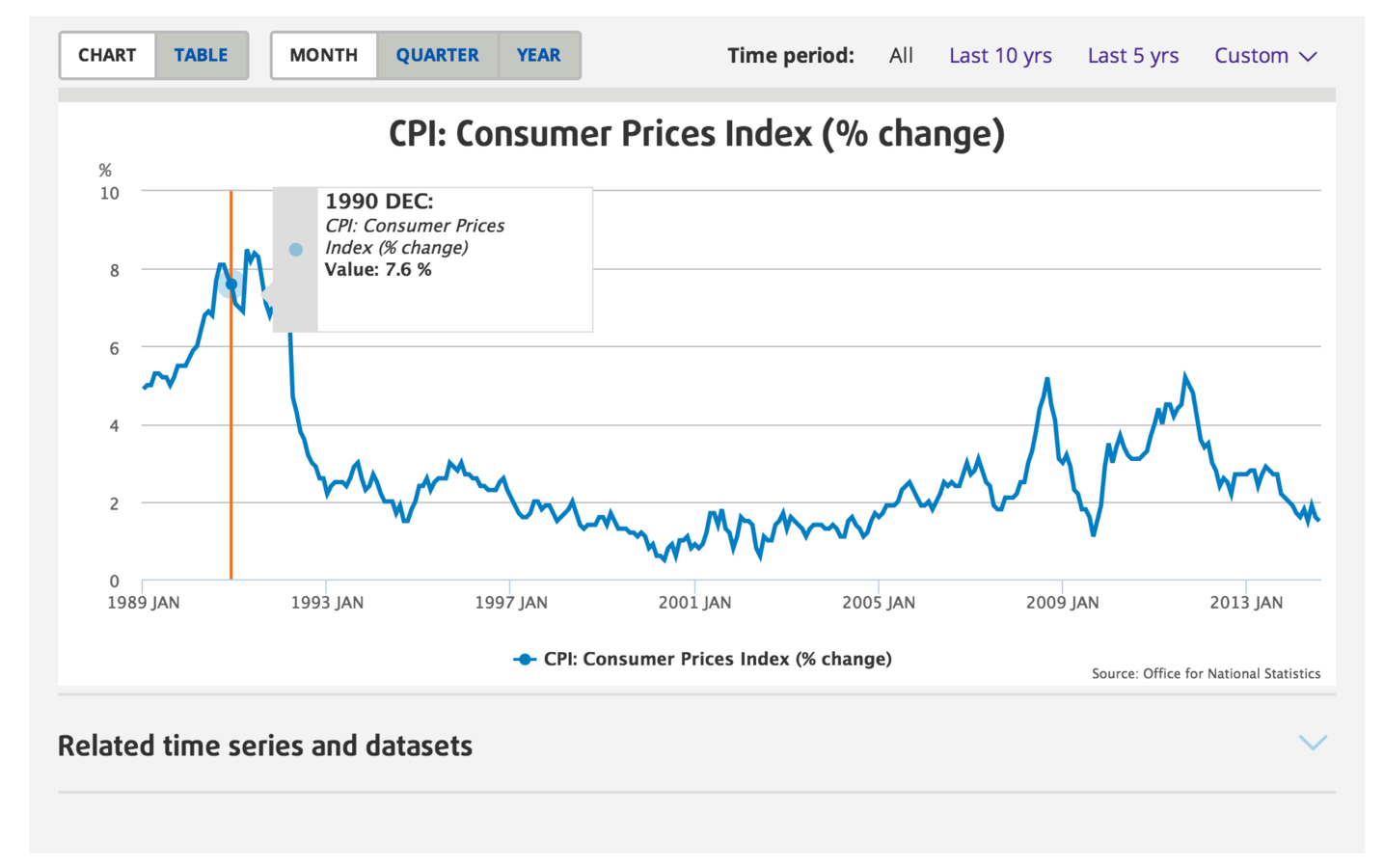
tools for beautiful
one-off designs
woah, algorithms!

3. maybe evolution is good too, as well as intelligent design?
"Maybe that’s the reason why people are sharing a lot of their work on http://bost.ocks.org/, doing some small experiments, laying down some building block...
...perhaps currently that is the most efficient way of building re-usable chart."
@muyueh on HN
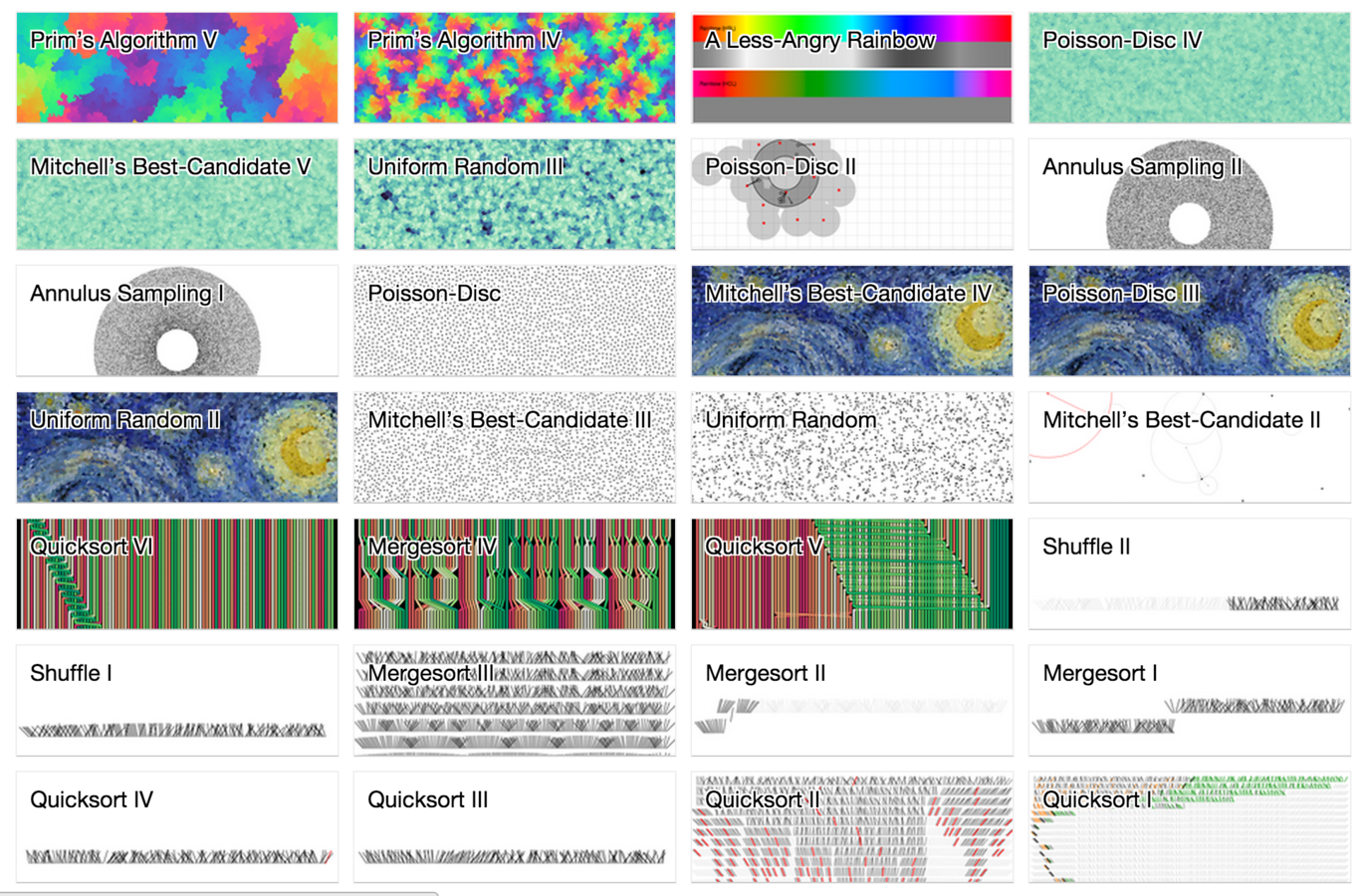
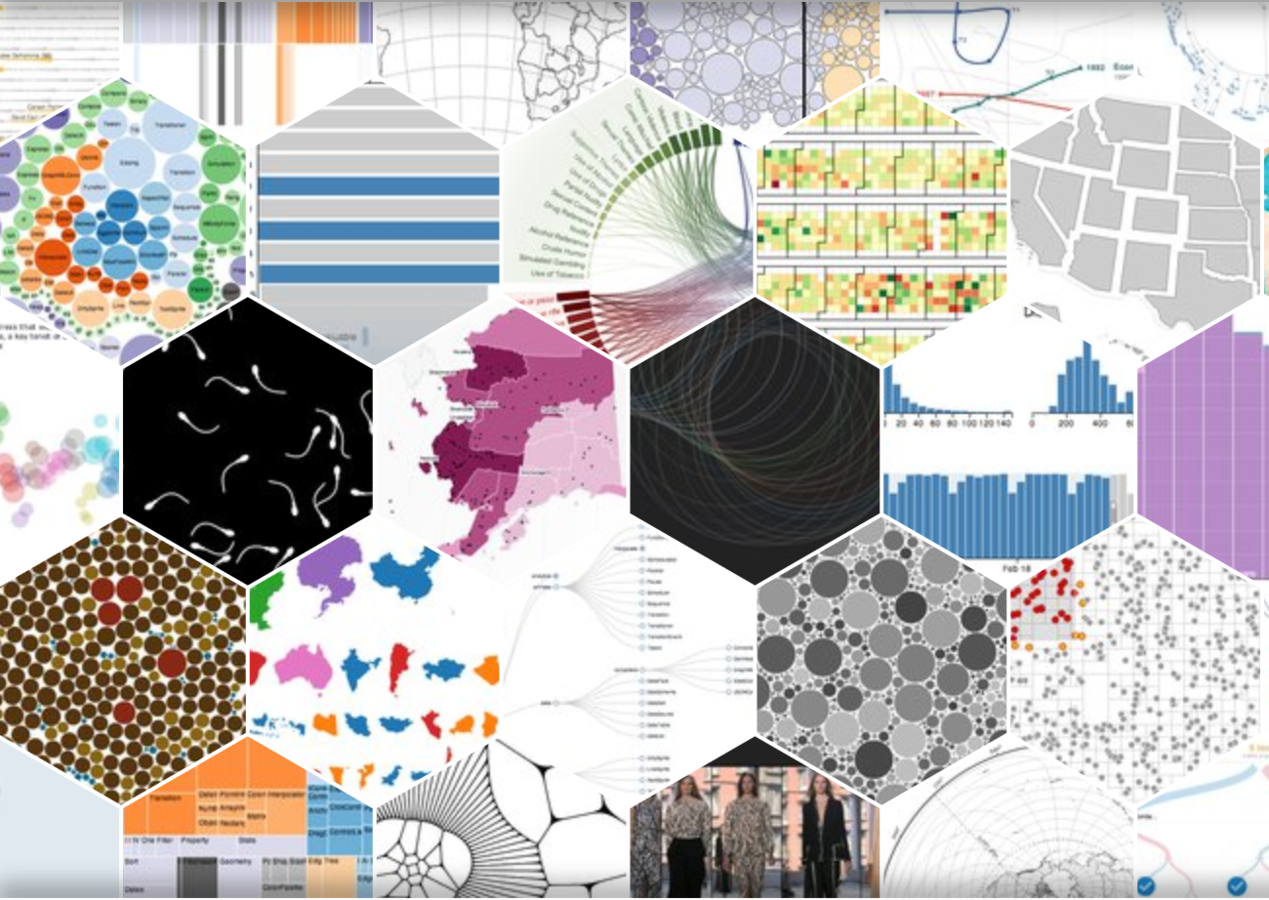
4. more re-use would be a fine thing
how can we encourage re-use?
over to you
(and thanks)
state of the chart
By annaps
state of the chart
a short, personal and incomplete survey of d3 charting libraries
- 2,266


